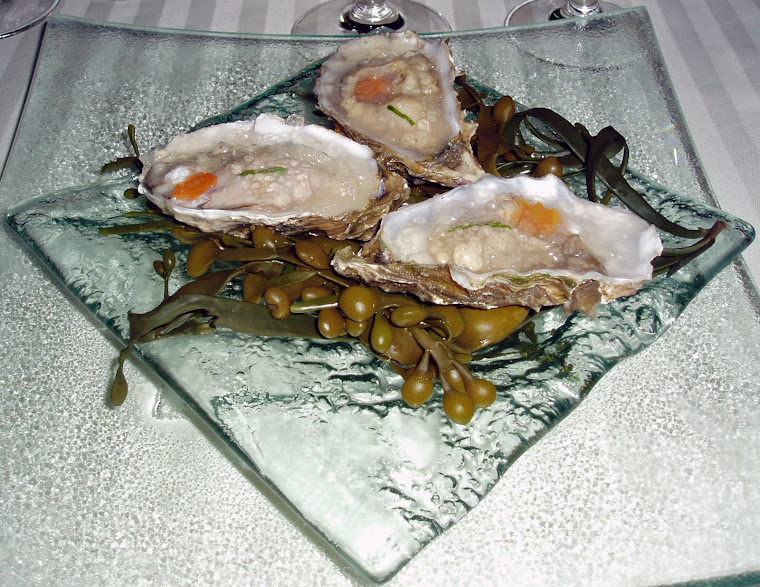Serves 8
The start for this recipe comes from “The Basque Kitchen” by chef Gerald Hirigoyen. We have visited and enjoyed his restaurant Fringale in San Francisco, where he and his wife Cameron reside and also own and run Pastis. We first became acquainted with the Basque Region by virtue of meeting Tony Paget’s wife, Mercedes, in Paris in 2000. Mercedes is Basque and she told us stories about her people. Subsequently in 2005 we took a Backroads hiking trip through the Basque regions of both Spain and France and had variations of this dish.
The spirit behind this version of Hirigoyen's original recipe is to adapt what is essentially a summer dish into a winter dish, by roasting fresh tomatoes for more intense flavor.
3 tablespoons olive oil
1 stick unsalted butter
2 pounds uncooked shrimp (16-20 per pound), shelled and deveined, 4 to 5 per person.
20 cherry tomatoes, cut in half
1 medium bulb of fennel, trimmed and sliced thinly
5 tablespoons Pernod pastis (see footnote below)
½ cup dry white wine
1 clove garlic, chopped
3 tablespoons freshly squeezed lemon juice
2 tablespoons chopped rosemary
2 tablespoons julienned fresh basil
1 tablespoon chopped fresh parsley
1 tablespoon snipped fresh chives
Kosher or sea salt to taste
Freshly cracked pepper to taste
Preparation: 1. Preheat an oven to 300 degrees. Place the 40 halves of tomatoes cut side up on a cookie sheet. Drizzle the olive oil over the tomatoes; sprinkle on sea salt and the rosemary. Add ground black pepper. Roast in the oven for two hours or until they resemble sun dried tomatoes. Reserve. 2. Shell and devein the shrimp. Reserve over ice. 2. Heat the butter in a large sauté pan. Add the fennel and sauté about five minutes until just soft, stirring frequently (do not overcook). 3. Add the tomatoes, shrimp and garlic and the pastis, ignite and flambé until the flame dies away. 4. Turn the heat down. Add the lemon juice, basil, parsley and chives. Adjust salt and pepper to your taste. Swirl the pan over the heat until the shrimp are completely covered in sauce. (Do not boil the sauce.)
Presentation: Serve as an appetizer for 8 in small bowls. Serve with a semi-sweet wine. Serve as a main course for four plated with plain Arborio rice, spooning the shrimp and sauce onto the middle of a one-cup serving of rice. Garnish with parsley.
Notes: Wild caught Key West, Gulf of Mexico, or Alaskan shrimp are preferred. Much of our shrimp today comes frozen from shrimp farms in Viet Nam, Thailand, Indonesia and Brazil. Shrimp farms are the number one threat to mangrove forests, the coastal wetlands that provide vital habitat for tropical fisheries and protect coastlines from damage by storms, hurricanes and tsunamis.
China has become a huge exporter of farmed white shrimp as well. These shrimp aqua-monocultures are very susceptible to diseases, which have caused several regional wipe-outs of farm shrimp populations, increasing ecological problems, and repeated disease outbreaks. The taste of these shrimp is “muddy.” I would advise buying wild shrimp.
Pernod Pronunciation (pear-NOH) - This is a popular brand of pastis, or licorice-flavored liqueur. It tastes like a fennel, which can be substituted for those who do not want alcohol in the dish [remember that flaming the pastis removes perhaps half the alcohol content]. Substitutes: Ricard, Herbsaint, or anisette.
Richard Wottrich (Photo: RLW; Shrimp Boat, Oslo, Norway)


